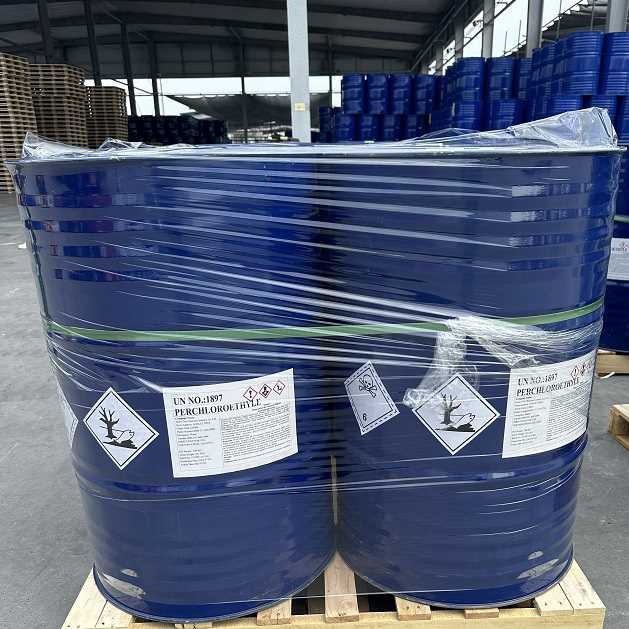Perchloroethylene ( also called Tetrachloroethylene, CAS 127-18-4) dry cleaning solvent is the most commonly used dry cleaning solvent for decades. Here is a detailed introduction to it from Hefei TNJ Chemical Industry Co.,Ltd.:
Basic information:
Product name: Tetrachloroethylene dry cleaning solvent, also known as perfluoroethylene.
Other name: Tetrachloroethylene or Perchloroethylene.
Molecular formula: C2Cl4
Molecular weight: 165.82.

Physical properties:
Tetrachloroethylene is a colorless liquid with a chloroform like or distinctive aromatic odor.
Melting point: -22.2 ℃ (some reports suggest -22.35 ℃ or -22.7 ℃).
Boiling point: 121.2 ℃.
Relative density (water=1): (20 ℃/4 ℃) 1.6226.
It is easy to remove organic oil pollutants, but ineffective for ionic bonding compounds.
Application situation:
Since its emergence in the 1940s, tetrachloroethylene has been widely used in the dry cleaning industry due to its good cleaning effect and low price.
Despite other dry cleaning solvents such as hydrocarbon solvents or silicon-based D5, D4, etc., over 85% of dry cleaning machines worldwide still use tetrachloroethylene. 2
Health and Environmental Impact:
Tetrachloroethylene can have a significant impact on close contacts, and excessive doses can even cause cancer. It has been explicitly banned by multiple foreign countries and was listed as a Class 2A carcinogen in 2017.
Tetrachloroethylene can cause damage to the human nervous system, liver, and other organs. Long term exposure may also lead to symptoms such as dryness and cracking of the skin.
The residue after distillation of tetrachloroethylene solvent contains harmful substances, which can contaminate soil and water systems and affect the ecological environment if dumped indiscriminately. 34
Precautions for use:
Dry cleaned clothes need to be hung for a few days before being put in the cabinet or worn to allow the tetrachloroethylene to completely evaporate.
For consumers, it is important to understand the types of solvents used by dry cleaners and choose to use more environmentally friendly dry cleaning methods or solvents. 35
In summary, although tetrachloroethylene dry cleaning solvent has good cleaning effect and low price, its use has been increasingly restricted and concerned due to its adverse effects on health and the environment.
(Edited by Sophia Zhang, sales04@tnjchem.com Hefei TNJ Chemical Industry Co.,Ltd.)


 chemical.tnj
chemical.tnj +8618949823763
+8618949823763 tnjchem
tnjchem 2881500864
2881500864